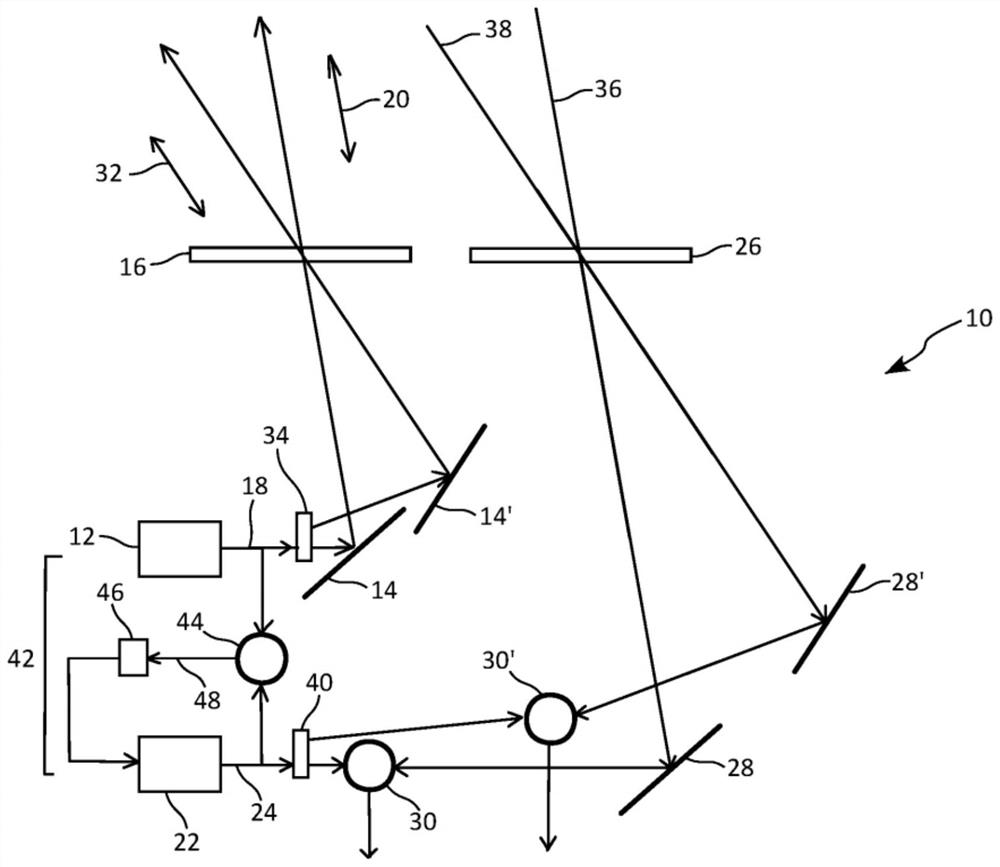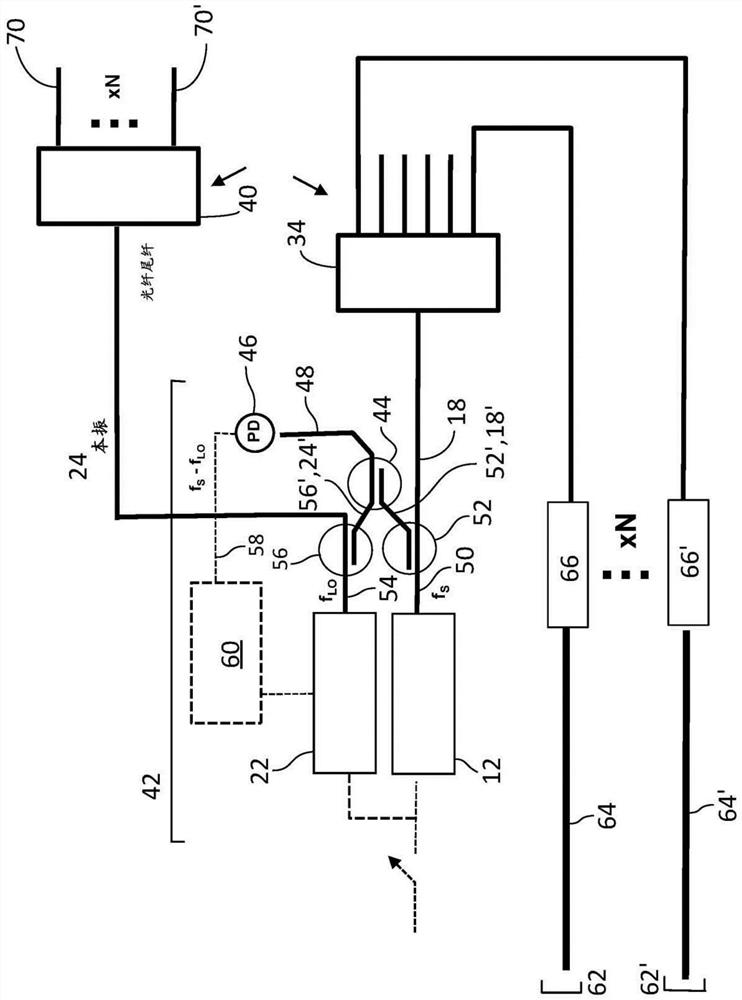Continuous Wave LiDAR Wind Velocity Sensor for Operation on Stratospheric Vehicles
A wind speed sensor and lidar technology, which can be used in fluid speed measurement, instruments, and re-radiation to solve problems such as high power consumption
- Summary
- Abstract
- Description
- Claims
- Application Information
AI Technical Summary
Problems solved by technology
Method used
Image
Examples
Embodiment Construction
[0056] In the following description, numerous specific details are set forth in order to clearly describe various specific embodiments disclosed herein. However, it will be understood by those skilled in the art that the presently claimed invention may be practiced without all of the specific details discussed below. In other instances, well-known features have not been described in order not to obscure the invention.
[0057] Embodiments of the present presentation relate to a LIDAR sensor system designed to detect wind speed in close proximity to the sensor, up to about 5 km from the sensor. The sensor system is lightweight and capable of operating within a limited power budget, and can be carried by, for example, a balloon or other stratospheric vehicle. Wind speed sensing in the stratosphere is performed by measuring the Doppler shift of the optical probe beam as it scatters back to the sensor. In the stratosphere, the Doppler shift is controlled by Rayleigh scattering, ...
PUM
 Login to View More
Login to View More Abstract
Description
Claims
Application Information
 Login to View More
Login to View More - R&D
- Intellectual Property
- Life Sciences
- Materials
- Tech Scout
- Unparalleled Data Quality
- Higher Quality Content
- 60% Fewer Hallucinations
Browse by: Latest US Patents, China's latest patents, Technical Efficacy Thesaurus, Application Domain, Technology Topic, Popular Technical Reports.
© 2025 PatSnap. All rights reserved.Legal|Privacy policy|Modern Slavery Act Transparency Statement|Sitemap|About US| Contact US: help@patsnap.com



